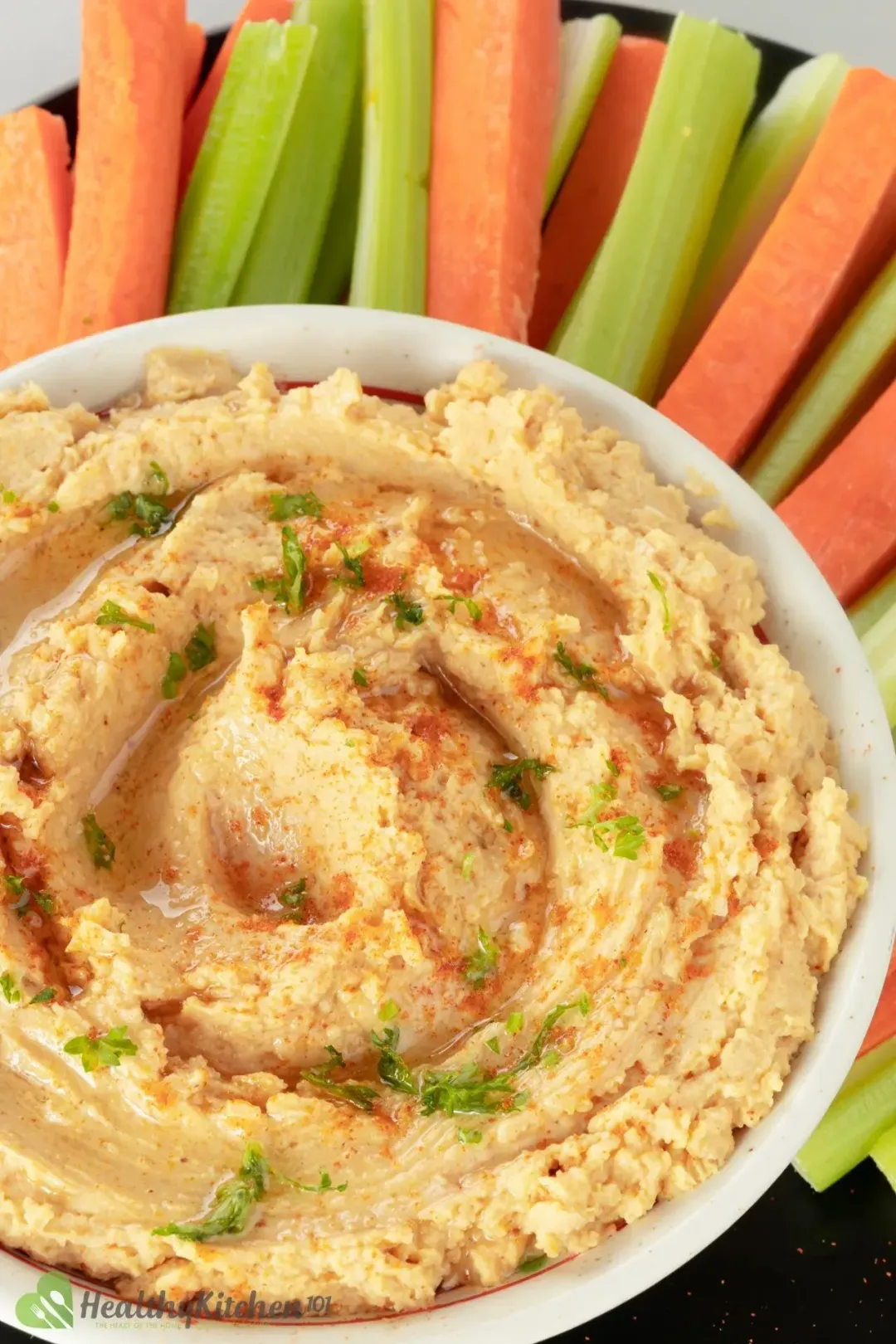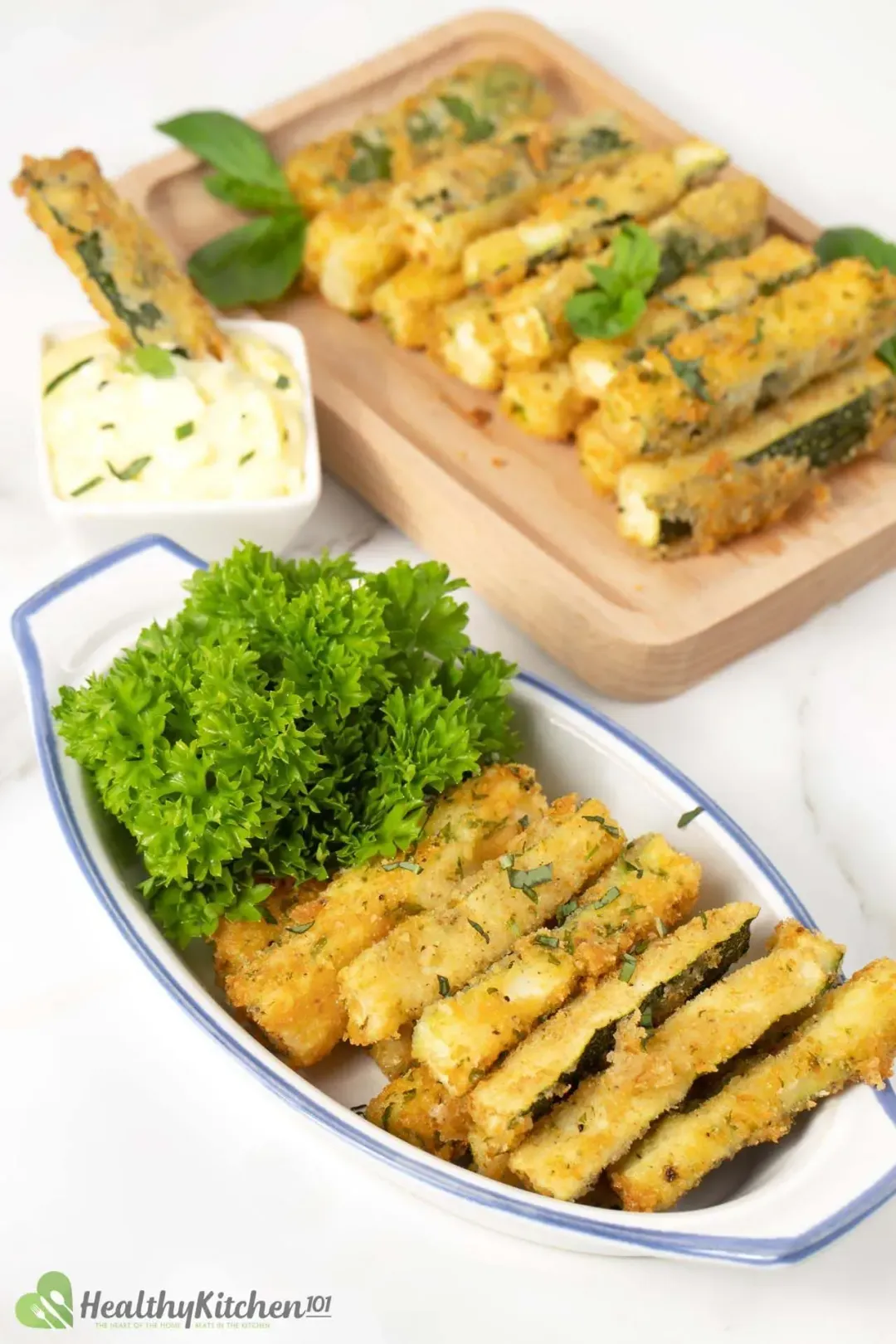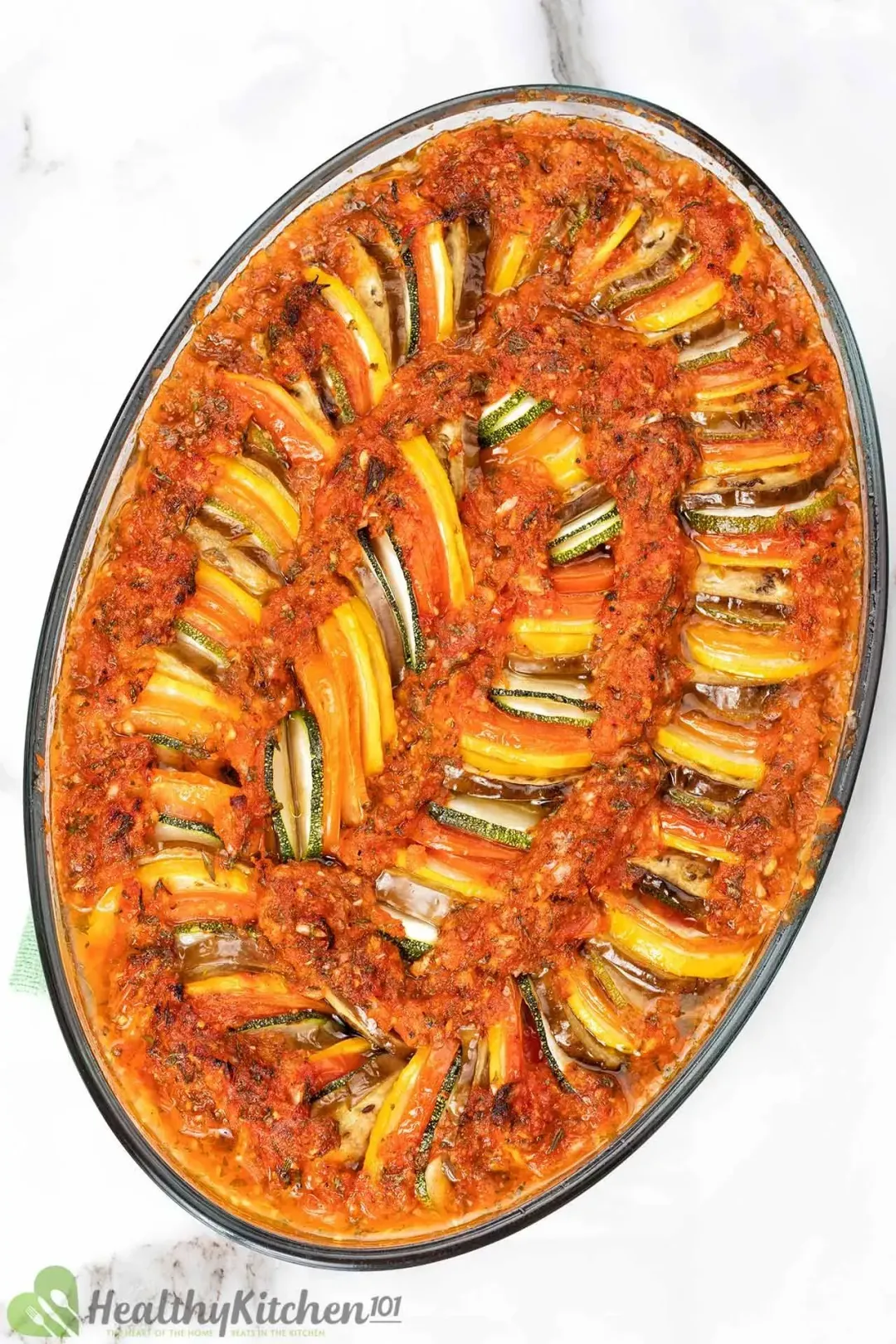This hummus recipe will help you make a luxurious dip that’s just asking to be scooped up by a chip or crispy pita wedge.
The difference between a sad-looking hummus and an extra creamy, inviting one is just 20 minutes. With a few ingredients and attention to detail, you can make an instant crowd-pleaser for parties or International Hummus Day (May 13), all in the comfort of your own kitchen.
What Is Hummus?
If you’ve ever seen a luscious dip with a swirled top and an ivory hue, chances are it’s hummus. Made of garbanzo beans/chickpeas, it has a flavor profile that is far more complex than it looks.
We serve our hummus with veggie sticks for an all-round healthy snack. But if that doesn’t tickle your fancy, chips or tortilla wedges work just fine.
To make hummus, blend chickpeas with herbs, spices, garlic, olive oil, tahini paste, and water. The result should be a stiff dip with bits of chickpeas.
Hummus is quite versatile, however, so it leaves a lot of room for experimentation. Feel free to play around with different ingredients to explore more amazing flavors. We’ve made a version with avocado and absolutely loved it.
To make the best hummus, we don’t blend everything together all at once. Instead, we add things in a specific order, and of course, at just the right moment.
The result is hummus that’s as smooth as cake batter and super elastic. Don’t worry, we’ll guide you through the steps and share what we’ve found works below.
Is Hummus Healthy?
Besides the expensive texture and flavor, our hummus recipe also brings you many health benefits.
1. Protein
Hummus’s main ingredient is chickpeas, which provide nearly as much protein as skin-on chicken breast. They are a great source of accessible protein to include in/for vegan and vegetarian diets.
Chickpeas are also an “almost” complete protein— they have 8 out of the 9 essential amino acids/EAAs (except for methionine). This is a good thing because the human body needs all of the EAAs to function properly.
2. Carbohydrates
Although rich in proteins, 63% of the bean’s mass is actually starch.
With the carbs and proteins comes fiber, both soluble and insoluble, which take up 12% of the bean’s weight. Fiber helps you digest foods slower, which allows you to be full for longer and prevents blood sugar spikes.
For this reason, chickpeas belong to a food group called “low-glycemic food”, or low GI. These are foods that take longer to digest (in contrast to refined carbs/simple sugars) so keep your body on a more even keel, making them are better to consume.
3. Calories
With fiber taking up 12% of their mass, garbanzo beans have a low-calorie density. Even in small amounts, they can fill your stomach and make you feel satiated.
In total, each serving of this hummus recipe yields 250 calories. Most of the calories come from the olive oil, tahini, and chickpeas— healthy sources of proteins and fats.
Let’s take a look at those and the other elements in this hummus recipe.
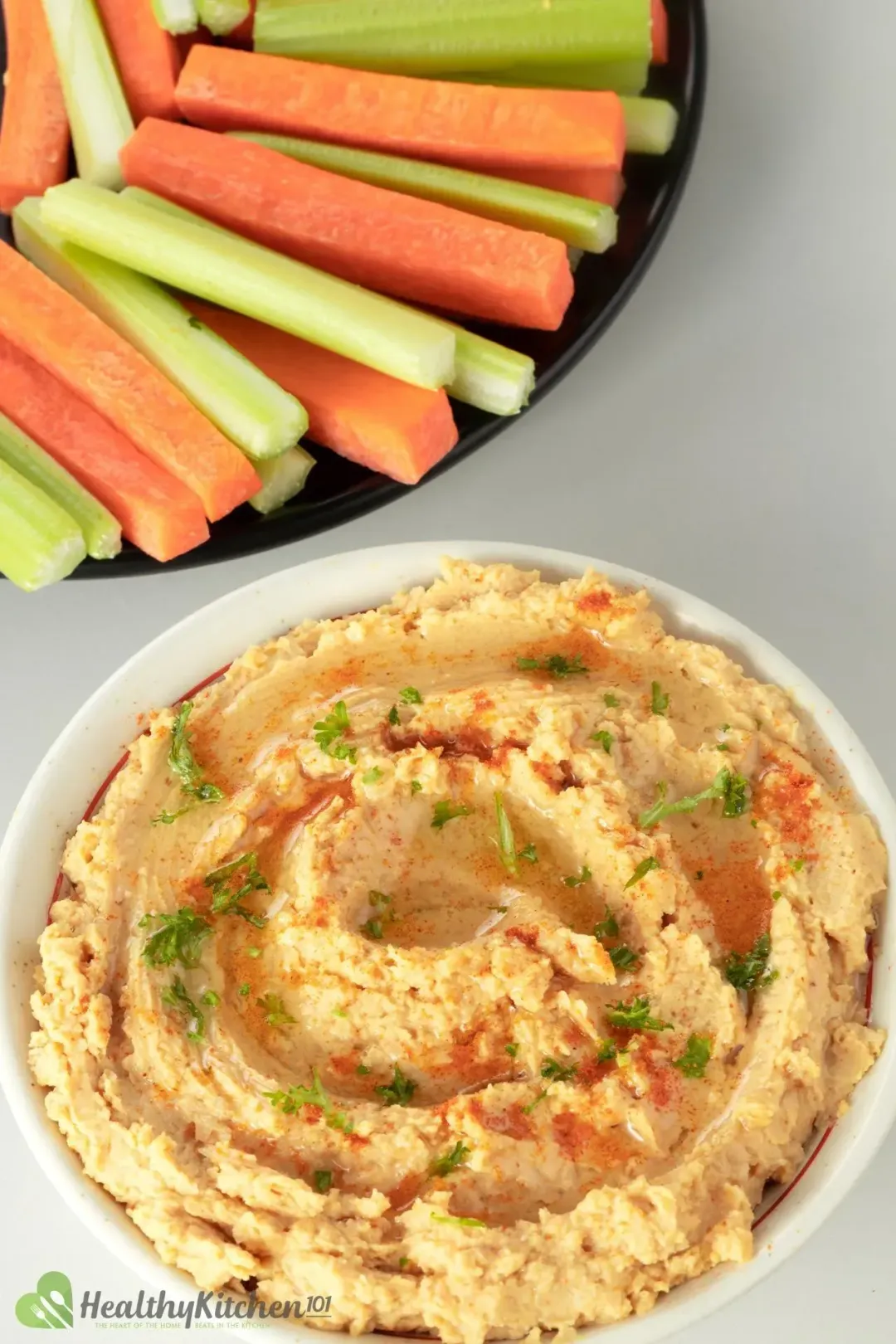
Main Ingredients
Let’s have a look at the essential ingredients for this hummus recipe (and what to do with them!)
1. Chickpeas
To achieve a silky dip, the chickpeas need to be cooked properly.
If you’ve worked with chickpeas before, you’ll know that they need to be soaked prior to cooking. To speed up the process, we used canned chickpeas, which are already cooked.
However, there’s more to it than that: you need to take the tenderness way further than that of canned chickpeas. This can be done by boiling canned chickpeas for about 20 minutes, or until they have trouble holding their shape.
Also, cooking chickpeas like this allows you to skip the skin-removal process. A win-win all round because otherwise, you’ll be spending time removing the skin of each bean, and nobody’s got time for that.
2. Tahini
Tahini is made with sesame seeds that are toasted and ground up. Because the seeds are ground very finely, their oil leaks out and mixes with the powder, creating a sort of thick sauce.
Besides being used to make hummus, people also mix it with herbs, spices, and yogurt to make tahini sauce. This goes particularly well with grilled meats and vegetables.
Some say the flavor of tahini varies between different brands and a perfect hummus can’t be achieved without the correct product. In theory, tahini should just be ground up sesame seeds, so unless you have fake tahini, it should taste about the same.
But since there are options and the possibility of additives, if you’re unsure, you can purchase the one we used. It’s linked right in the recipe card down below.
3. Garlic
Hummus can be really garlicky or just mildly aromatic, depending on your preference.
If you prefer the strong smell of garlic in your dip, add garlic cloves in along with the chickpeas. There will possibly be tiny bits of garlic to chew on.
If you want to go for a dip with milder garlic flavor, blend the cloves FIRST with lemon juice. This helps to break them down into tiny little bits, and as they are submerged in lemon juice, their fragrance is greatly diminished.
4. Lemon Juice
With just a squeeze, lemon juice makes a world of difference. Freshly-squeezed citrus juice brings brightness to the dip, which store-bought versions often don’t have.
Let’s look at how to combine all these delicious and fragrant elements.
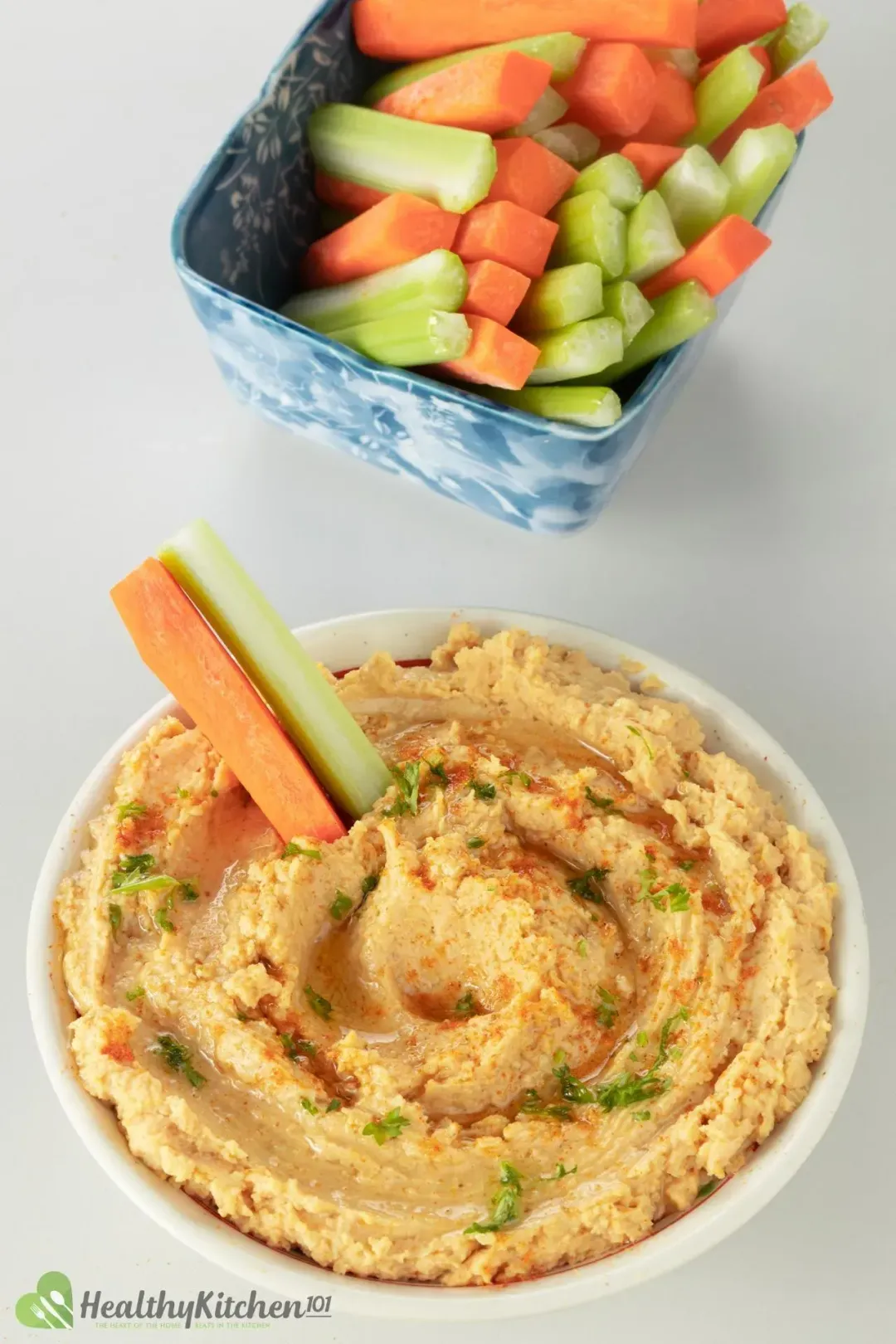
What to Eat with Hummus
So you’ve made your dip, but the thought of veggie sticks isn’t very thrilling. If you fancy a little variety, you can try hummus in or with some of these:
1. Sandwich
To switch things up, ditch mayo and instead, spread a thick layer of hummus onto your bread before adding the fillings. It moistens up your bread, adds great flavors, and unlike mayo, you can have a lot without worrying about eating bad fats.
Here are some sandwich ideas for you:
- Tuna sandwich + hummus
- Egg salad sandwich + hummus
- Avocado toast + hummus
- Pita bread + falafel + hummus
2. Chips
Since it’s still a dip, you can serve it with potato chips or pita wedges. It instantly becomes an essential component of movie marathons or game nights.
Want an easy way to make chips? Cut pita breads/corn tortillas into triangles and bake at 350°F for 5 minutes or until crisp.
3. Falafels
Instead of mayonnaise/tahini sauce, you can dip falafels in hummus and not even notice that these are all… chickpeas. It’d be a protein-rich meal that comes with a side of comfort.
Check out our falafel recipe to try out this iconic duo!
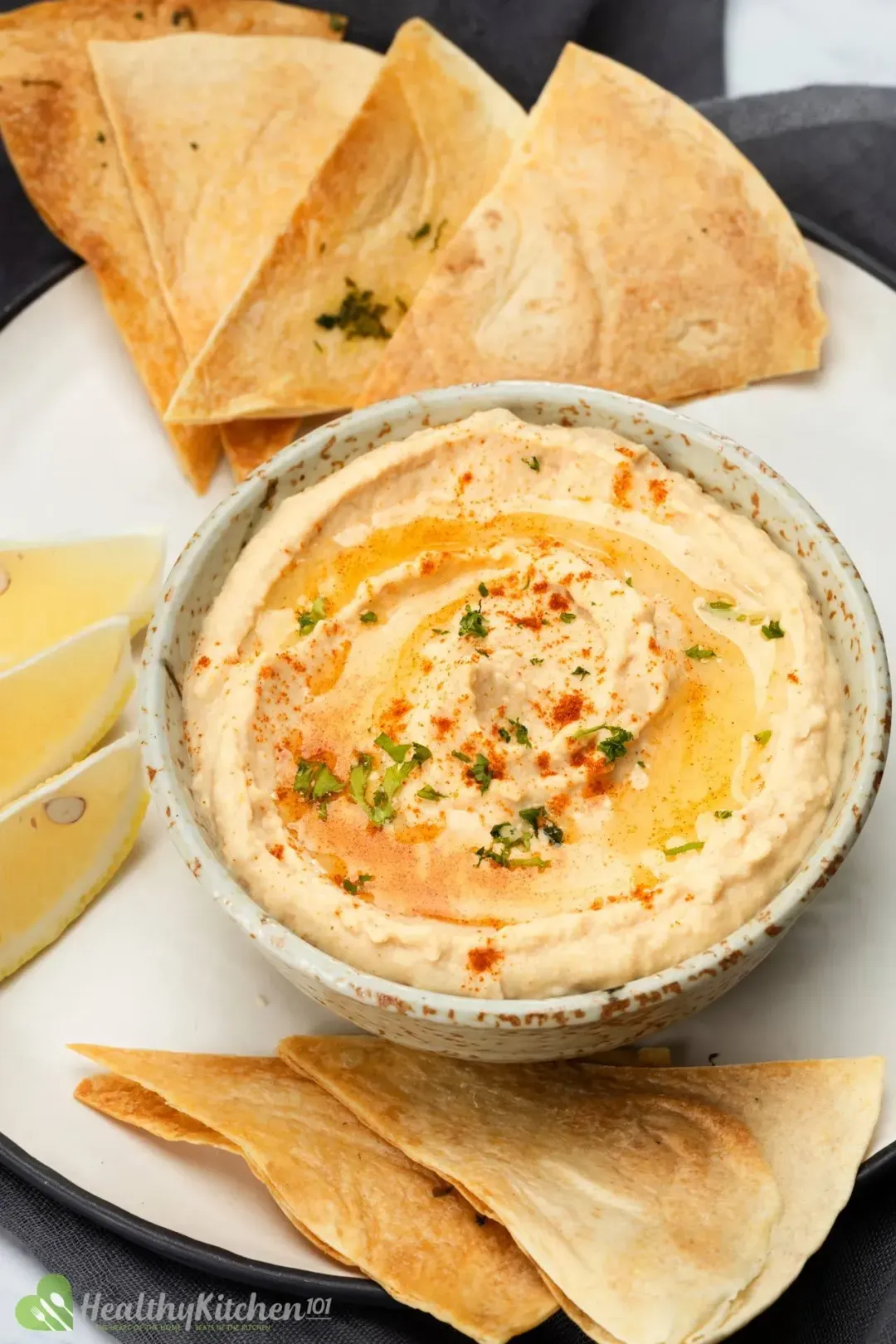
Other Middle Eastern Dishes to Try
Want to explore more Middle Eastern cuisine? Start with these utterly irresistible dishes that you can whip up in a flash:
FAQ
1. Is Hummus Keto?
With a small amount of carbs and packed with proteins as well as good fats, hummus is a good choice for anyone following a keto diet.
However, you might want to consider options other than bread and chips to go with this dip. A more appropriate choice is falafel, which is also keto-friendly thanks to its protein content.
2. Is It Gluten Free?
Hummus is absolutely gluten-free too, since there’s no flour in it. The veg sticks are also gluten-free.
If you want to serve hummus with bread and chips, look for GF ones.
3. How Long Does It Last?
Homemade hummus should last for 3-5 days refrigerated and covered. You may find the color turning a little bit dark, but it’s still edible.
4. Can You Freeze?
Hummus is also freezer-friendly and microwave-friendly. All you need to do is store it in a microwave safe container in the freezer, and you can have a good dip whenever you want within 6 months!
Do note that after you’ve thawed hummus, it should be consumed within 3-5 days and should not be refrozen. If you’ve made a lot of hummus, it should be divided into portions before freezing.
Hummus Recipe
Feeling guilty about eating various unhealthy dips? You shouldn't be. Try this hummus recipe instead. We can assure you it is one of the healthiest, tastiest dips that you will ever have!
- cook TIME 20 mins
- prep TIME 10 mins
- total TIME 30 mins
- COURSE Dip, Side Dish
- CUISINE Middle East
- SERVINGS servings
- CALORIES 248 kcal
INGREDIENTS
- 1 cup canned chickpeas
- 1/4 cup tahini paste
- 2 tsp garlic (1-2 cloves)
- 2 tbsp lemon juice
- 4 tbsp water (cold)
- 1/4 tsp paprika
- 1/2 tsp ground cumin
- 1/4 tsp salt
- 2 1/2 tbsp extra-virgin olive oil
- 4 oz carrot (cut into sticks)
- 5 oz celery (cut into sticks)
- 1 tbsp parsley
INSTRUCTIONS
Drain 1 cup canned chickpeas and rinse them well under cold water.
Boil the chickpeas for 20 minutes for an extra luscious texture. They should be squishable between the thumb and index finger. Leave to cool down.
Add 2 tsp garlic to a food processor along with 2 tbsp lemon juice and blend for 2 minutes straight. There should be tiny particles instead of big chunks of garlic.
Add 1/4 cup tahini paste and 4 tbsp cold water, and blitz until smooth. It’s important to use cold water, because it’ll add extra smoothness to the final product.
Add chickpeas, 1/2 tsp cumin and 1/4 tsp salt, and blend for 5 minutes. Occasionally scrape down the sides to make sure it’s lump-free.
Gradually add 2 1/2 tbsp olive oil while it’s blending so in the end, it becomes lusciously smooth. If your food processor doesn’t come with a feeding tube, add one tablespoon of oil at a time, blend, and repeat until no oil is left.
Sprinkle with 1/4 tsp paprika and 1 tbsp parsley for garnish. Serve with 4 oz carrots and 5 oz celery sticks.
NUTRITION
Tuyet Pham
Head Chef, Culinary ConsultantLuna Regina
Writer, AuthorLizzie Streit, MS, RDN, LD
Nutrition Reviewer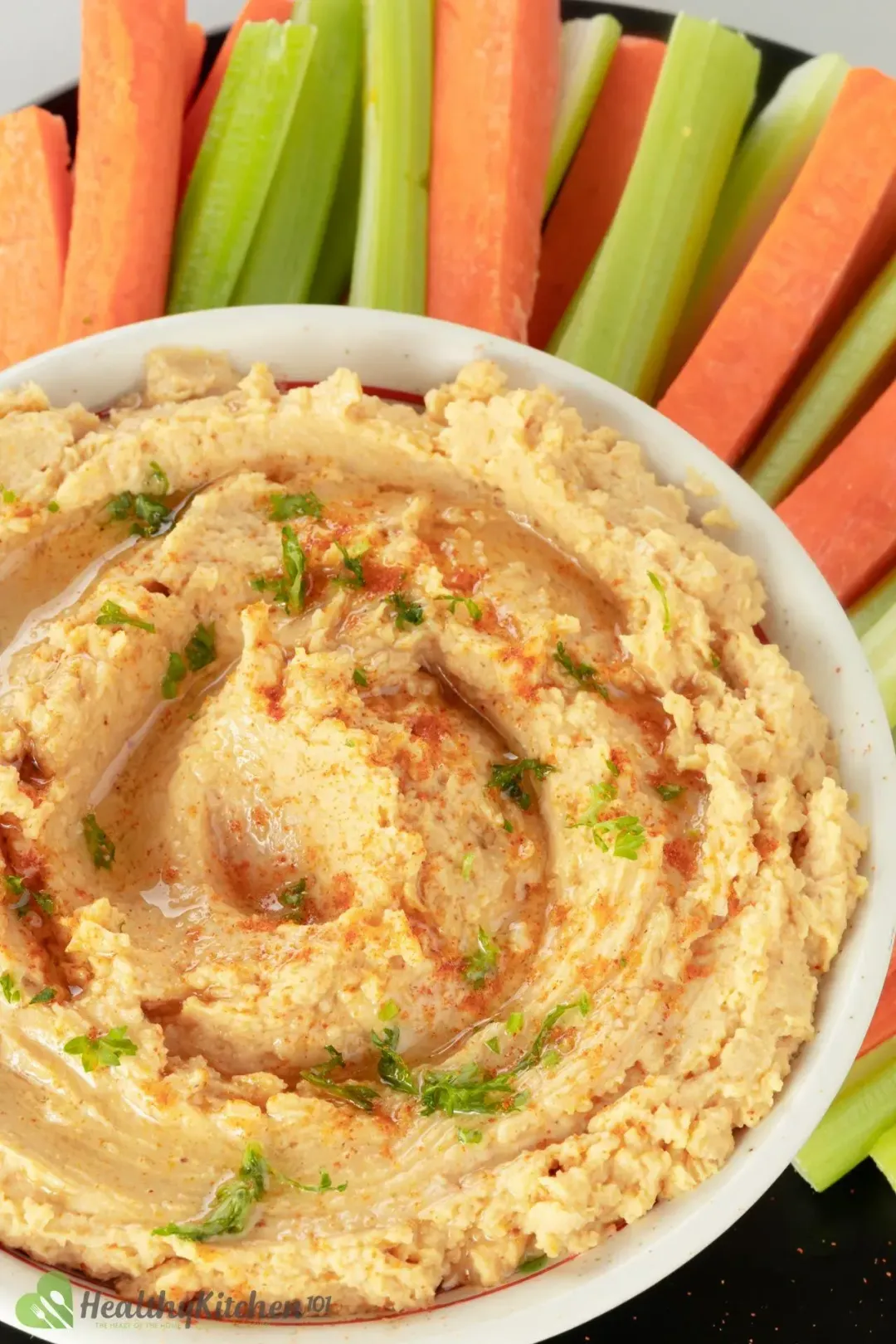
- LainezThe hummus came out so well! Absolutely packed with flavor and a great dip for chips and bread.
